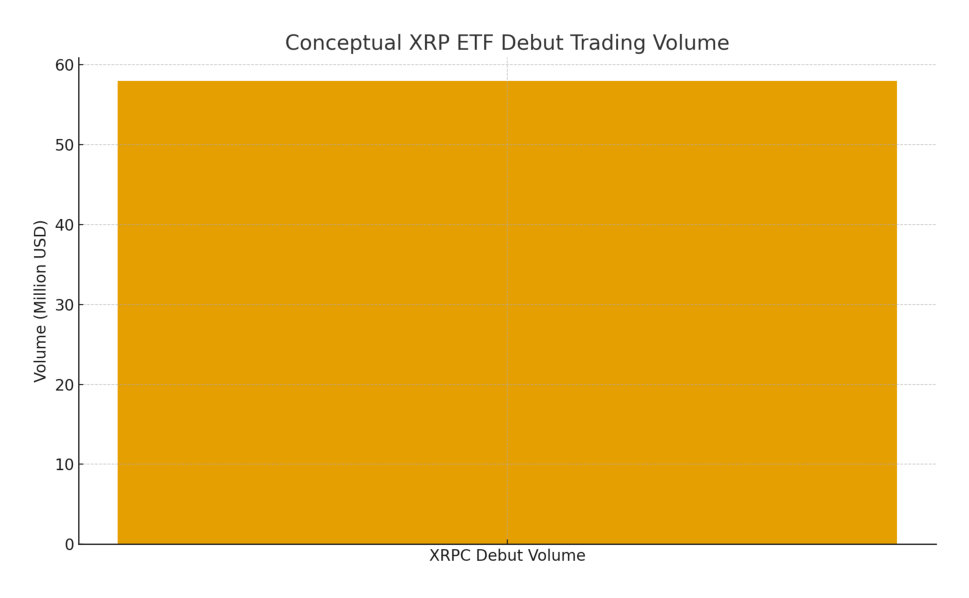
Main Points :
- Analysts expect 100+ new crypto ETFs—including single-asset and index-based ETPs—to be approved by 2026 as the SEC resumes normal operations.
- Massive investor demand remains, especially for index-based crypto ETFs that enable diversified passive exposure.
- Despite high interest, both BTC ETF and XRP ETF products are experiencing record outflows, placing downward pressure on crypto markets.
- Long-term holders (“whales”) drove much of the selling during October–November, deepening volatility.
- ETF inflows/outflows continue to reshape price dynamics, and 2026 may mark the beginning of a structural shift toward mainstream digital-asset portfolios.
Introduction: A Reopened U.S. Government and a New Era for Crypto ETFs
With the U.S. government officially ending its shutdown and returning to a normal legislative schedule, market analysts now anticipate an acceleration in regulatory approvals for digital-asset investment products. In particular, the U.S. Securities and Exchange Commission (SEC) is expected to approve a wave of new cryptocurrency exchange-traded funds (ETFs) in 2026.
The reopening may seem administrative, but for capital markets—especially digital-asset markets that rely heavily on regulatory clarity—this shift is critical. Asset managers, institutional investors, and fintech innovators have been waiting for months to resume filing, updating, and refining ETF applications. Now, the pipeline is reopening.
Matt Hougan, Chief Investment Officer of Bitwise, stated in a CNBC interview that the demand for crypto ETFs and exchange-traded products (ETPs) is “massive,” and the next two years will bring an unprecedented expansion of choices.
Surging Demand for New Crypto ETF Structures
(1) The Coming Wave of 100+ New Crypto ETFs
Hougan forecasts that more than 100 newly designed crypto ETFs are likely to enter the market between 2025 and 2026. These include:
- Single-asset ETPs (e.g., SOL, XRP, ADA, AVAX)
- Multi-asset crypto baskets
- Smart-beta style crypto indices
- Themed digital-asset index funds (e.g., “Layer-1 Leaders,” “RWA Tokens,” “Gaming Tokens”)
His strongest conviction lies in the growth of index-based crypto ETPs, which he argues will serve investors seeking a small, passive allocation without the need to evaluate individual coins.
This mirrors the historical path of equities: after single-stock ETFs gained traction, index-based ETFs reshaped passive investing.(2) Why Index-Based Crypto ETFs Will Dominate
Index-based ETFs are attractive for several reasons:
Portfolio Efficiency
Instead of researching dozens of digital assets, investors can access a diversified basket in one product.
Lower Volatility via Diversification
Crypto remains volatile, but index exposure smooths idiosyncratic risk.
Ease of Adoption
Institutional investors can allocate to a single ticker without operational complexity.
This aligns with growing institutional interest in small allocations—typically 1%–3%—to digital assets as part of modern diversified portfolios.
ETF Outflows: The Weak Force Undermining Market Prices
Despite the strong macro outlook, the current environment is marked by persistent ETF outflows.
(1) XRP ETF: A Strong Debut Followed by Market Weakness
Canary Capital’s XRP ETF (ticker: XRPC) listed on Thursday and recorded an impressive $58 million in first-day trading volume—making it the strongest ETF debut of 2025 so far.

And yet, XRP price dropped ~13% over the week, according to CoinMarketCap.
This indicates a disconnect between ETF trading activity and spot-market performance.
Why?
Because ETF flows—especially outflows—have more direct influence on price dynamics than raw trading volume.(2) Bitcoin ETFs: Heading Toward the Worst Outflow Month in History
Farside Investors reports that Bitcoin ETFs recorded nearly $1.1 billion in outflows in just the first two weeks of November—potentially marking the worst ETF outflow month since ETFs launched.
Glassnode data shows:
- The average acquisition cost (cost basis) for Bitcoin ETF investors is approximately $89,600.
- BTC fell below this level on Tuesday, pushing a large portion of ETF holders into a loss position.
Once BTC crosses below ETF investor cost basis, selling often accelerates due to:
- Risk-management rules
- Programmatic rebalancing
- Institutional mandates
(3) Long-Term Holders Are Selling—A Bearish Short-Term Signal
Eric Balchunas (Bloomberg ETF Senior Analyst) noted that whales—the longest-term Bitcoin holders—were responsible for most selling during October and November.
Whales tend to sell during:
- Major macro uncertainty
- Funding stresses
- ETF-driven volatility periods
This selling pressure has extended into the broader crypto market, contributing to weakness in altcoins and prompting further ETF outflows.
How ETF Dynamics Are Changing the Crypto Market Structure
ETF flows—especially from U.S.-listed ETFs—now act as a macro force, influencing:
- Liquidity
- Volatility regimes
- Momentum cycles
- Long-term investor behavior
- Institutional entry points
This represents an evolution similar to what equity markets experienced with the rise of index funds.
In the old cycle, crypto was driven primarily by:
- Retail sentiment
- Exchange inflow/outflow depth
- Miner capitulation patterns
Now, ETF flows alone can cause $500M–$1B weekly swings in demand.
Recent Market Developments to Complement the Article
To strengthen investor context, here are relevant developments from November 2025:
(1) Ethereum Staking Yields Fall Below 3%
Reduced yields make ETH staking less attractive, pushing capital toward alternative assets including structured crypto ETFs.
(2) Solana Institutional Adoption Surges
New institutional-grade Solana custody and staking services are boosting market interest in a future SOL ETF.
(3) Real-World Asset (RWA) Tokenization ETFs in Development
Several asset managers are preparing ETF filings focused on:
- U.S. Treasuries on-chain
- Tokenized treasury bill baskets
- On-chain corporate bond indices
These products may reach mainstream approval between 2026–2027.
(4) Derivatives-Linked ETPs Grow in Europe and Asia
Non-U.S. markets are approving:
- Leveraged crypto ETPs
- Options-overlay ETFs
- Volatility-targeting baskets
This momentum increases pressure on U.S. regulators to keep pace.
Visual Aid: Conceptual Bitcoin ETF Outflows Chart

Conclusion: 2026 Could Become the Breakout Year for Crypto ETFs
The U.S. government’s reopening accelerates the regulatory pipeline, setting the stage for 100+ new crypto ETFs to enter the market in 2026. Investors will gain access to:
- Single-asset ETPs
- Diversified index-based ETFs
- RWA-backed on-chain funds
- Institutional-grade crypto allocation tools
However, current weakness driven by Bitcoin and XRP ETF outflows reminds us that ETFs influence markets much more than simple trading volume suggests.
Outflows can depress spot prices quickly, while inflows can catalyze powerful rallies.

